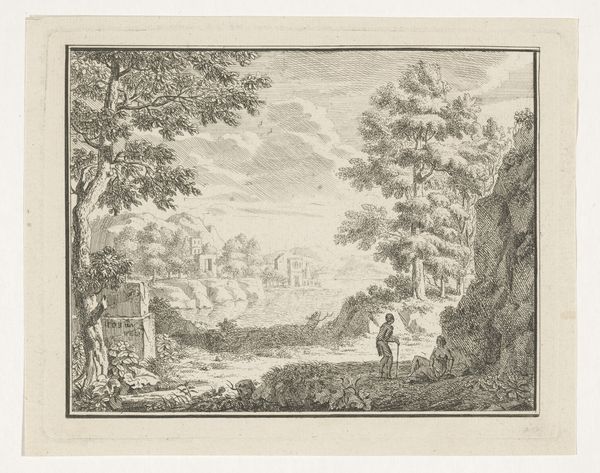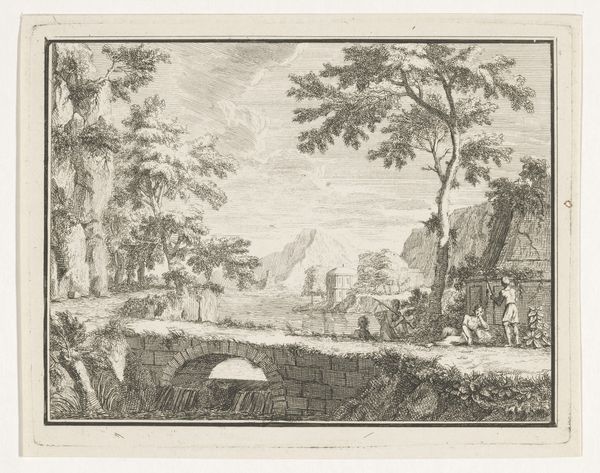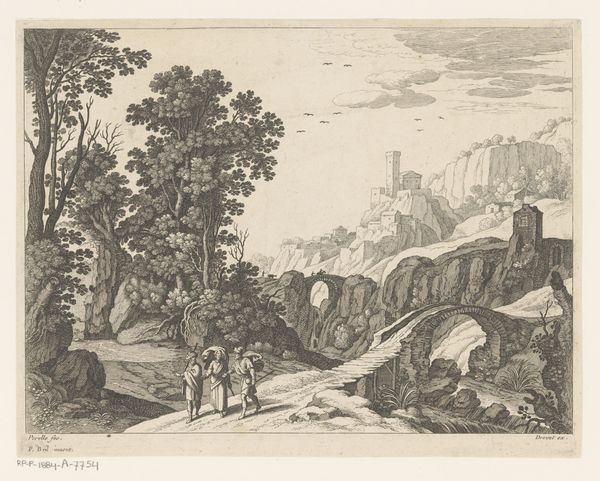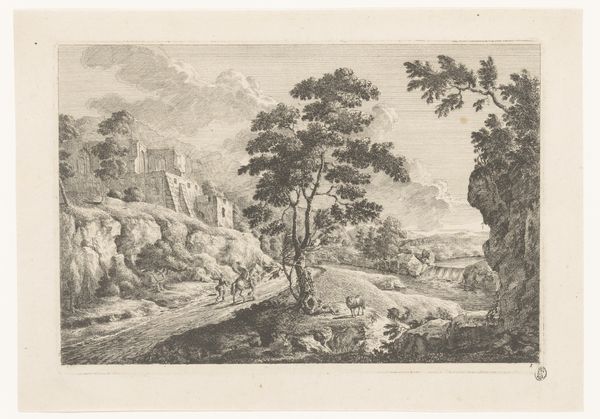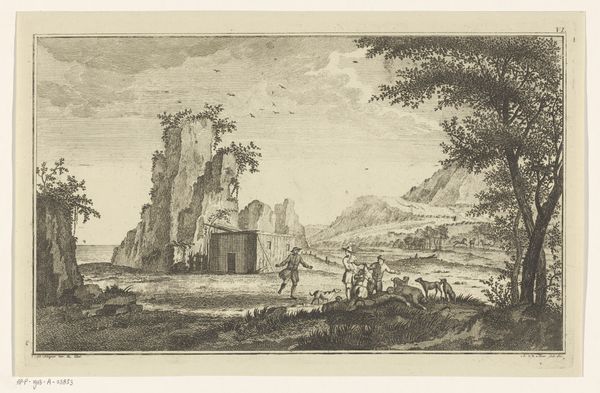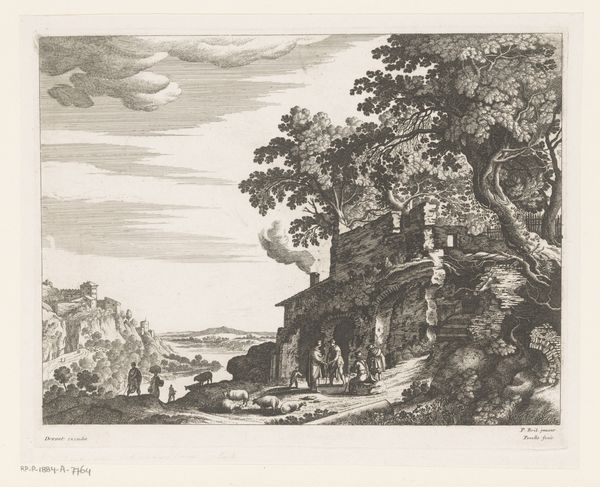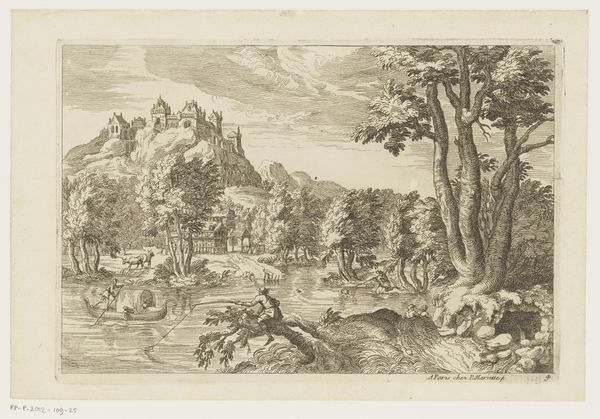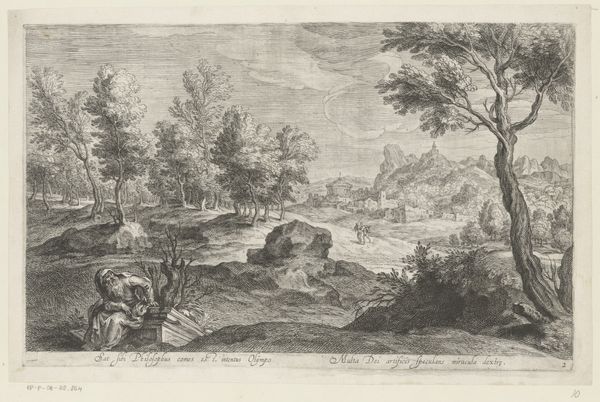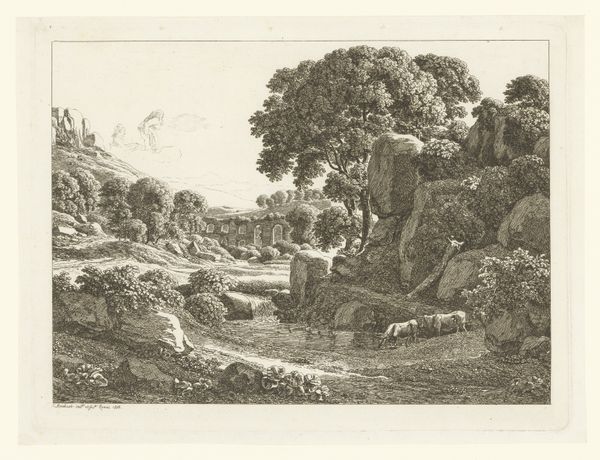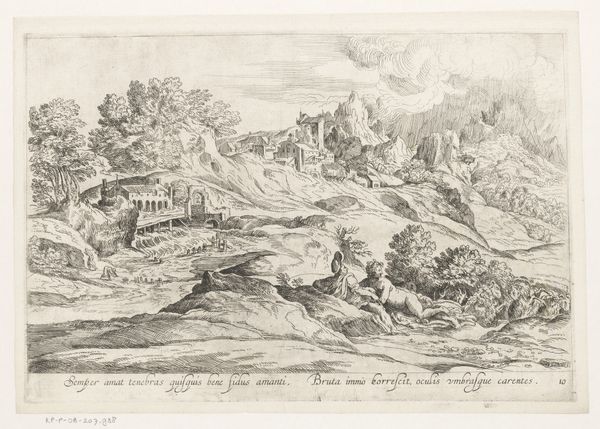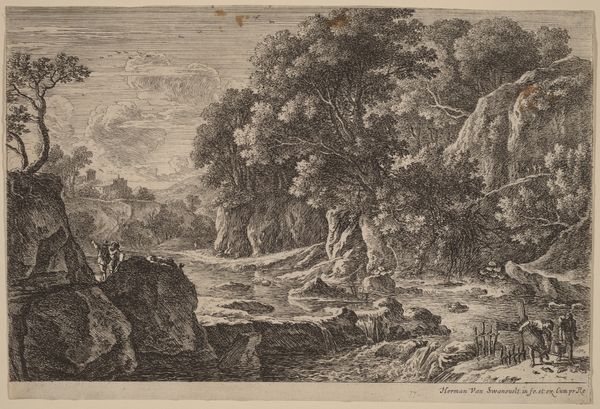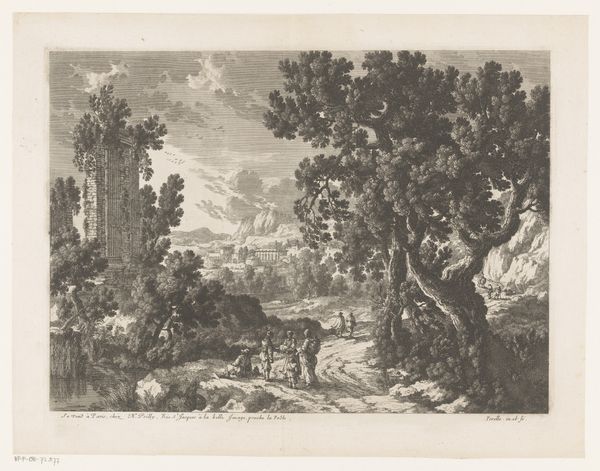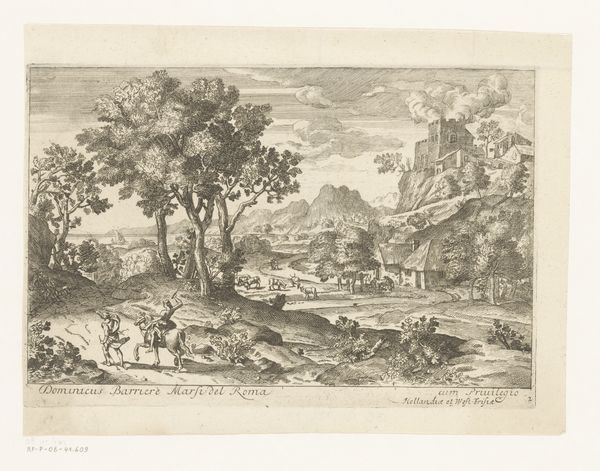
Arcadisch landschap met twee reizigers bij een waterval 1713 - 1775
0:00
0:00
louisfabritiusdubourg
Rijksmuseum
print, engraving
#
baroque
# print
#
landscape
#
genre-painting
#
engraving
Dimensions: height 145 mm, width 185 mm
Copyright: Rijks Museum: Open Domain
Curator: Ah, the Arcadisch landschap met twee reizigers bij een waterval. This landscape etching, dating from somewhere between 1713 and 1775, is attributed to Louis Fabritius Dubourg and is now held at the Rijksmuseum. Editor: My immediate impression is one of intricate tranquility. There's a structured harmony between the figures, the landscape's various textures, and that idyllic architecture on the horizon. Curator: Note how the etching medium, in black and white, directs our attention to lines and values, structuring the gaze within the composition. The delicate hatching constructs the interplay of light and shadow. How might the engraver's craft itself be central here? Editor: Well, the lines create not just depth but also define surfaces—the roughness of the rocks versus the smooth skin of the figures. The artist also likely oversaw assistants in what could be argued, then, to be an early factory for distributing 'fine art.' These landscapes were, essentially, commodities. Curator: But does this demystify the artwork entirely? Or does this mass reproducibility highlight its sophisticated aesthetic composition: the placement of each figure, each tree, each element? We can explore how that informs the baroque pursuit of representing the ideal and the sublime. Editor: I’d say it contextualizes it. Who was commissioning such works? And what was their relationship to landscape itself, as a material entity providing food, resources, even national identity? Those elegant figures are presented almost apart from that reality, aren't they? Curator: Perhaps they symbolize a disconnect, an intellectualized vision of nature. Or it may also show nature becoming a symbol of power for its commissioners through acquisition and control. The viewer can use their discretion. Editor: It offers a sobering reminder that images, even of idyllic scenes, are made by someone, for someone, shaped by specific material and economic forces. And how those choices have reverberated down through history to reach us today. Curator: Indeed, understanding the formal qualities and historical conditions invites multiple layers of interpretation to the artist and their audience. It enables one to critically assess and admire its structural organization.
Comments
No comments
Be the first to comment and join the conversation on the ultimate creative platform.
